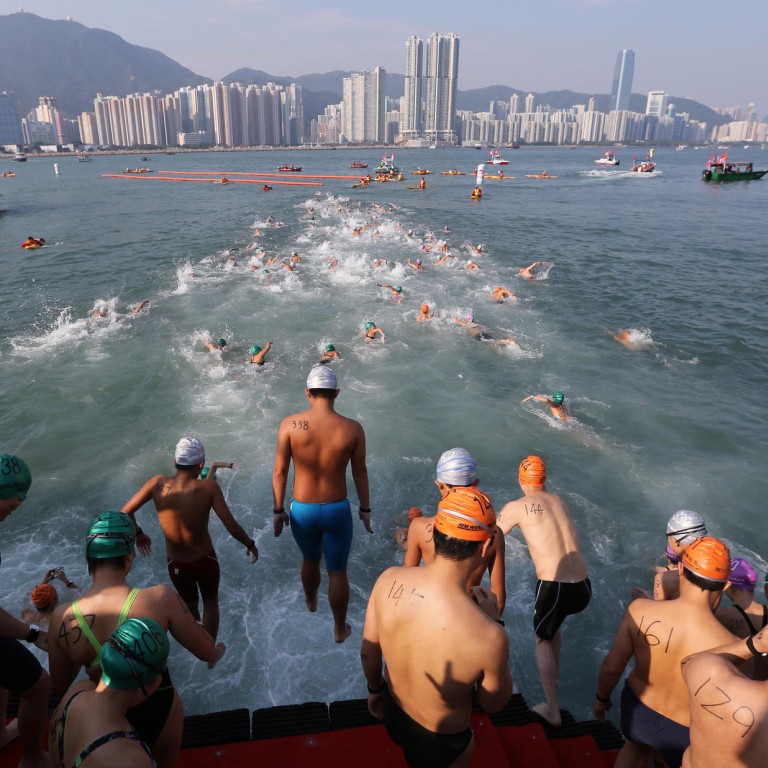
Hong Kong harbour's return to health should be a green light for more water sports events
Ian Brownlee says with nature, and people, returning to the waters made cleaner by the government's sewage treatment scheme, it's time to make best use of our major natural asset
A quiet revolution is taking place in Victoria Harbour as nature starts to reclaim the waters. And few are aware of the significance. In September, the government started turning off the last of the sewers which had for years spewed thousands of tonnes of almost raw sewage into the harbour. This is a major step in completing the Harbour Area Treatment Scheme, which has progressively seen the construction of major infrastructure to collect sewage from Hong Kong Island and Kowloon, and send it to the massive Stonecutters Island sewage treatment works.
Before 2001, the poor water quality in the harbour was an embarrassment to this wealthy city which placed so little priority on caring for the natural environment. Raw sewage flowed directly into the harbour. The poor water quality did not need technical assessment; it could be seen and smelled. Arrivals at Kai Tak airport were met with the pungent smell of pollution from the Kai Tak nullah.
In 1995, construction of stage one of the treatment scheme started with a network of very deep tunnels collecting sewage from the eastern and northern parts of the harbour, taking it to the new sewage treatment works. Operation started in 2001 and 1.4 million cubic metres of sewage were collected every day. The removal of this sewage increased dissolved oxygen in the eastern harbour by about 10 per cent and reduced levels of key pollutants - ammonia by 31 per cent; nutrients by 36 per cent; and the overall E.coli level by some 50 per cent.
Corals have been found again and scientific studies have shown that a wide range of marine species have returned
This change was significant and made the harbour usable. In 2010, disinfection of discharge reduced the bacteria concentration in the western waters so that seven closed beaches in Tsuen Wan were opened to swimming between 2011 and 2014.
By 2011, the water quality in the eastern harbour had improved so much that the cross-harbour swimming race, suspended for 33 years because of pollution, was reinstated.
Since 2012, an international triathlon has been held annually off Tsim Sha Tsui East with competitors swimming in waters where few would have envisaged people would ever venture.
READ MORE: Taking the plunge: Record number of entries for Hong Kong's iconic cross-harbour swim
Marine life has returned to the harbour waters and is starting to thrive, increasing in both size and variety. Many fish are now seen in the Kai Tak nullah and larger fish are being caught in the eastern harbour by recreational fishermen. Corals have been found again and scientific studies have shown that a wide range of marine species have returned.
This is despite 25 per cent of the sewage from Hong Kong Island's north and western parts still flowing into prime central waters. Stage two of the scheme will address this and by the end of November the system will be fully operational and sewage will no longer be pouring into the waters off Wan Chai.
This massive change creates a great opportunity to reassess the use of the harbour as a recreational asset. The chief executive, in his 2015 policy address, instructed the relevant bureau to explore the feasibility of organising water sports activities in Victoria Harbour. Also, the remaining areas of coastal waters in the harbour presently subject to discharge of residual pollutants will be studied to remove these final problems, arising mainly from illegal discharges, to provide venues for water activities along the harbourfront.
The harbour provides a dramatic venue for all sorts of water-based sports, and there are many international events which would love to come to Hong Kong. One problem is that the design of the waterfront does not facilitate use of the water, as in the past people have been discouraged from contact with it. Future designs need to encourage people to be in and on the water.
The completion of stage two of the Harbour Area Treatment Scheme provides a statement that Hong Kong cares about the quality of its major natural asset. This could be celebrated in no better way than by having a diverse range of local and international water sports events on the harbour every weekend.

